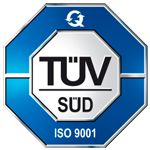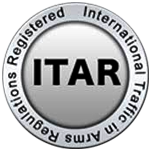5 Tips for Choosing the Right Home Power Cable with Industry Standards in Mind
Choosing the right home power cable is essential for ensuring safety, efficiency, and compatibility with your electrical devices. With numerous options available in the market, it can be overwhelming to make the perfect selection. This blog will provide you with five practical tips, keeping industry standards in mind, to help you navigate the complexities of home power cable choices. From understanding the significance of wire gauge to recognizing the importance of insulation types, our guide aims to equip you with the knowledge needed to make informed decisions. Whether you are wiring a new home or upgrading your existing electrical system, paying attention to these key factors will lead you towards reliable and safe power solutions tailored to your needs.
Understanding Different Types of Home Power Cables and Their Applications
When it comes to selecting the right home power cable, understanding the different types and their specific applications is crucial. The most common types of home power cables include Non-Metallic (NM) cable, Armored cable (AC), and Underground Feeder (UF) cable. NM cable, widely used in residential wiring, is designed for dry locations and is ideal for interior installations, as it consists of insulated conductors encased in a flexible plastic sheath. In fact, data from the National Electrical Manufacturers Association (NEMA) indicates that NM cable applications account for approximately 70% of residential wiring choices in the United States.
On the other hand, Armored cables provide enhanced durability and protection against physical damage, making them suitable for areas exposed to potential hazards, such as attics or basements. According to a report by the Institute of Electrical and Electronics Engineers (IEEE), these cables are preferred in environments where safety is paramount, as they can withstand external stresses better than conventional cables. For outdoor applications, Underground Feeder (UF) cables are recommended; they are moisture-resistant and feature a thicker insulation layer to prevent damage from environmental factors. Ensuring compliance with the National Electrical Code (NEC) standards when selecting these cables is essential to guarantee safety and performance in your home.
Key Industry Standards for Home Power Cables You Need to Know
When selecting home power cables, it is vital to understand the key industry standards that ensure safety and efficiency. One such standard is the National Electrical Code (NEC), which sets the guidelines for electrical wiring in residential buildings. This code outlines requirements for cable types, installation practices, and safety measures, providing a framework to help homeowners and electricians avoid common electrical hazards.
Another important standard is the Underwriters Laboratories (UL) certification. Cables that meet UL standards are tested for their performance, durability, and safety. A UL-listed cable ensures that it does not overheat or become a fire hazard under normal usage conditions. Additionally, the American National Standards Institute (ANSI) guidelines offer specifications on cable size, insulation, and material types, helping consumers select cables that are appropriate for their power usage needs and environmental conditions. Understanding these standards is crucial for making informed decisions and securing a safe electrical environment in your home.
5 Tips for Choosing the Right Home Power Cable with Industry Standards in Mind
| Tip | Description | Industry Standard | Recommended Use |
|---|---|---|---|
| 1. Know Your Power Needs | Calculate the total wattage needed for your home appliances. | NEC (National Electrical Code) | General household usage |
| 2. Choose the Right Gauge | Select a wire gauge that can handle the current load. | AWG (American Wire Gauge) | Heavy appliances |
| 3. Insulation Type | Consider the environment where the cable will be installed. | UL (Underwriters Laboratories) | Indoor vs outdoor use |
| 4. Length of Cable | Determine the length needed to ensure minimal voltage drop. | NEC | Long runs |
| 5. Check Local Codes | Ensure compliance with local electrical codes and standards. | Local Electrical Code | All installations |
How to Assess the Electrical Load Requirements for Your Home
When assessing the electrical load requirements for your home, it's essential to understand your current capacity and future needs. Recent research highlights that outdated electrical systems often fall short as homeowners increasingly adopt energy-intensive appliances and smart home technologies. According to the U.S. Energy Information Administration, the demand for electricity in residential areas has been steadily rising, driven by trends like electric vehicle charging and smart home integrations. This emphasizes the need to evaluate not just what you currently have, but how much additional power you may require in the coming years.
One key factor in this assessment is the national electrical code requirements, which provide guidelines on safe outlet spacing and load management. Ensuring that your home meets these standards is crucial for preventing overloads and fire hazards, particularly with the introduction of new appliances or systems that enhance energy efficiency. Additionally, tools developed by fire safety organizations can help homeowners navigate the complexities of electrical code requirements, ensuring that combustible components are adequately addressed in your home’s infrastructure. By staying informed and proactive, you can secure a safe and efficient electrical setup that meets both current and future demands.
Tips for Selecting the Right Cable Length and Flexibility
When selecting a home power cable, considering the cable length and flexibility is crucial for both safety and usability. The NEMA recommends that the length of the power cable should be determined by the distance between the power outlet and the device it connects to, along with a safe allowance of extra length to avoid tension and potential damage. Generally, it is advised to add at least 10% more length to your estimated requirement to ensure you have enough slack for maneuverability.
Flexibility also plays a significant role in the performance of power cables, especially in environments where cables are often repositioned. According to a study by the International Electrotechnical Commission (IEC), flexible cables significantly reduce the risk of wear and tear compared to rigid options. When selecting a cable, opt for those labeled with 'fine-stranded' wire, which offers increased flexibility without compromising on the ability to carry the necessary current load. Additionally, consider cables with a durable outer insulation rating, such as the PVC type, which provides greater resilience against daily stresses.
Safety Considerations for Home Power Cable Installation and Maintenance
When installing and maintaining home power cables, safety should always be the top priority. Ensuring that the cables you choose comply with industry standards is crucial, as this guarantees not only functionality but also the safety of your household. Look for cables that have been certified by recognized authorities, as they meet strict guidelines for heat resistance, insulation integrity, and conductivity. Choosing high-quality cables can help prevent potential hazards such as electrical fires or short circuits.
Additionally, proper installation is key to maintaining a safe environment. Make certain that the installation follows local electrical codes and regulations. It is often advised to consult a licensed electrician for installation to avoid common mistakes that can lead to dangerous situations. Maintenance should include regular inspections for any signs of wear and tear, such as frayed wires or damaged insulation. Proactively addressing these issues can prevent serious accidents and extend the lifespan of your home power cables, ensuring your home remains a safe space for you and your family.
Power Cable Safety Considerations
NORTH EASTON MACHINE • 218 Elm Street • North Easton, MA 02356 • 508-238-6219

